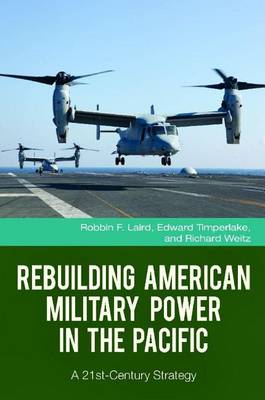Changing Face of War
3 total works
War and Governance: International Security in a Changing World Order
by Richard Weitz
Rebuilding American Military Power in the Pacific
by Robbin Laird, Edward Timperlake, and Richard Weitz
This volume examines how the U.S. military must rebuild in the wake of Iraq/Afghanistan, and refocus its power projection to face the new challenges emerging in the Pacific and with China.
Rebuilding American Military Power in the Pacific: A 21st-Century Strategy provides an all-encompassing look at the challenges facing the United States in shaping a 21st-century Pacific strategy: dealing with the growing Chinese colossus, the unpredictable nuclear challenge presented by North Korea, the dynamic of the Arctic opening, and maintaining the security of the conveyor belt of goods and services in the Pacific. Can the United States successfully train and prepare for the 21st century, and break free from the mindset that determined its strategies in the previous century? The authors of the work explain why a carefully considered, fully modernized Pacific strategy is a key element for the evolution of American military power-and why shaping an effective air and maritime strategy in the Pacific as well as globally is the crucial challenge facing the U.S. military and the policy community. Written by authors with significant access to the media, think tanks, and high-level politicians, the book provides an insider's look at how American military leaders are building out relevant capabilities in the Pacific to defend America and its allies, and it contains extensive interviews with those leaders.
An insightful and expert assessment examines how best to end-and avert-wars.
How do we avoid war? To arrive at an answer, master analyst Richard Weitz explores the ways nations, international organizations, and individuals have sought to bring order to an inherently disorderly phenomenon-potential and actual violent conflict among organized political entities.
Specifically, War and Governance: International Security in a Changing World Order analyzes a number of critical issues such as whether regional security institutions have distinct advantages and liabilities in promoting international security, as compared with universal organizations like the United Nations. Other important questions are addressed, as well. How will international organizations, such as the UN, EU, and NATO, change the nature of war in the 21st century-and be changed by it? What role might less formal institutions and nongovernmental organizations play in peacemaking? Will the nation-state remain the most important international security actor? The book ends with a gap analysis that identifies incongruities between international needs and capabilities-and suggests ways to overcome them.
- Short case studies
- A survey of key institutions and sub-organizations
- Maps


